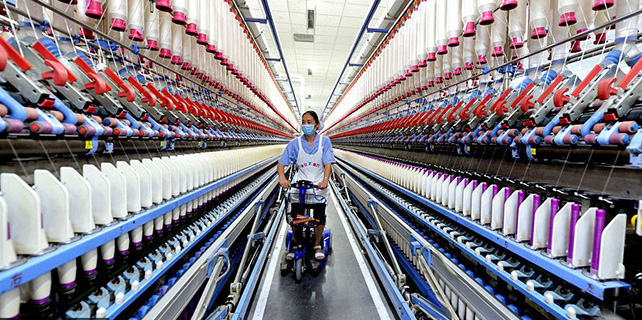For the US, China is closer than the moon
US historian John K. Fairbank famously said in 1972, "Since 1950 Washington has officially sent more men to the moon than it has to China, even though China is closer, more populous, and the trip less costly and dangerous."
About 40 years later, Washington is sending 14,000 American students to China for educational opportunities annually, according to US Education Secretary Betsy DeVos.
The tempo will further accelerate. A total of 100,000 US students will be awarded opportunities to study in China in the coming four years. An additional 10,000 credit scholarships will be provided to American youngsters by the Chinese government in the same period, according to the First US-China Social and Cultural Dialogue Action Plan, released on Sept 28.
The inaugural social and cultural dialogue, which as far as I know, is both compact and efficient.
It was co-chaired by Chinese Vice-Premier Liu Yandong and US Secretary of State Rex Tillerson on Sept 28 in Washington, followed by a public event at George Washington University featuring a "Nextgen Dialogue" panel after speeches by Liu and two of President Donald Trump's cabinet members, DeVos and Secretary of Transportation Elaine Chao.
All happened in half a day, but the dialogue has charted a course of how the people in the two countries can "live together for the next 50 years and build a shared future", as the theme of the dialogue suggests.
Through the dialogue, Washington and Beijing have pledged to produce 130 outcomes involving an array of cooperative areas in education, social development, science and technology, health, subnational, arts and culture and environment and conservation.
"Together, we can nurture greater connections between our scholars, scientists, students, journalists, and non-governmental leaders for the benefit of our two countries and the world," a joint statement of the dialogue said.
Among the many pledges and projects, I think the following takeaways are most remarkable.
First, tangible benefits and enhanced mutual understanding.
The two sides will partner to promote educational opportunities in the United States for Chinese students, and vice-versa.
The Chinese students bring billions of dollars to the US economy every year, the US State Department said in a summary of the dialogue on Sept 29. Just think about the additional 100,000 Chinese students who will come to study in the US in the next four years, given that one of three international students in the US already is from China.
As for the American students in China, DeVos said she hoped they would "get to know the beauty and culture of China".
More people-to-people exchange in education, arts and culture, science and technology will build stronger social and public support for the development of Sino-US relations.
Second, the role of civil society in US-China exchanges will be ramped up.
The two sides agreed to promote sports exchanges, bilateral exchanges and cooperation on gender equality and women's empowerment, and welcome contributions of US and Chinese non-governmental organizations. Both sides also agreed that China's foreign NGO management law will not impede the legal activities of American NGOs in China.
Third, making cooperation on health a "vital priority" in the bilateral relationship will yield more results to benefit the two countries and the rest of the world.
Cooperation in this area shows the world's two largest economies are jointly providing public goods to the world. For example, both sides intend to further enhance collaboration to promote bilateral and global health security to contribute to build a community of a shared future.
They agreed to continue to jointly plan and carry out key exchange, training and capacity building programs related to health innovation, infectious disease prevention and global public health collaboration in Africa.
They also committed to maintaining a clear process and timeline for the rapid, consistent and continuous sharing of novel influenza viruses with human pandemic potential.
Fourth, the historic China-US Science and Technology Cooperation Agreement will be renewed, meaning wide-ranging ties in scientific and technological cooperation will continue to expand. Already under the 1979 pact, the two countries have supported thousands of cooperative programs.
Indeed, Fairbank was right that for Washington China is closer than the moon. And down-to-earth exchanges between the two countries will certainly break down barriers to a more constructive partnership.
Contact the writer at huanxinzhao@chinadailyusa.com
















